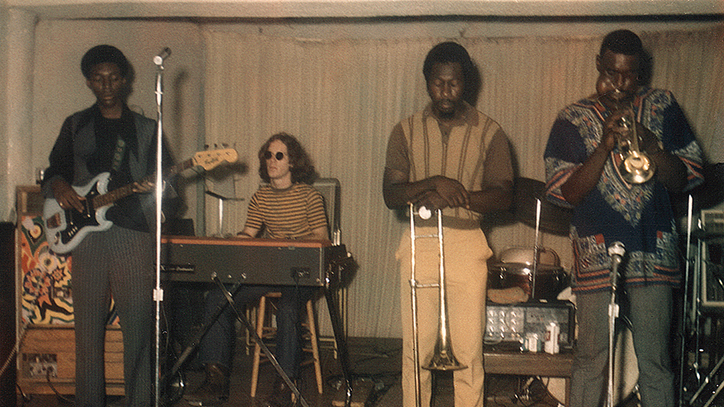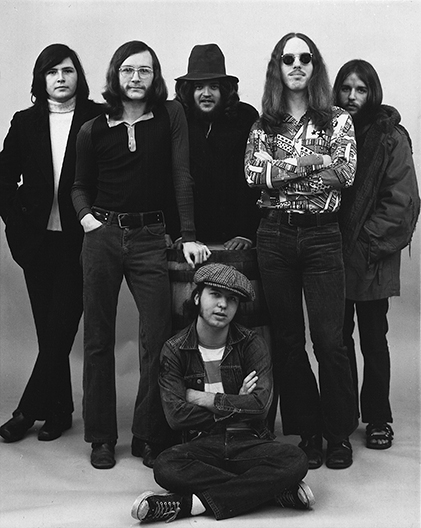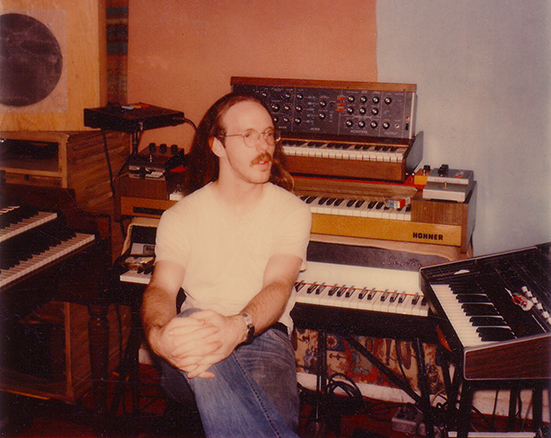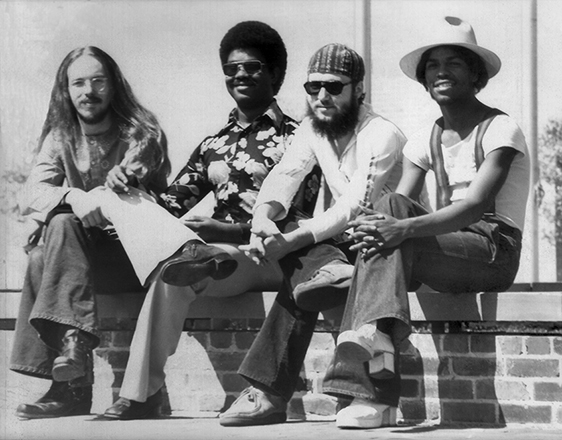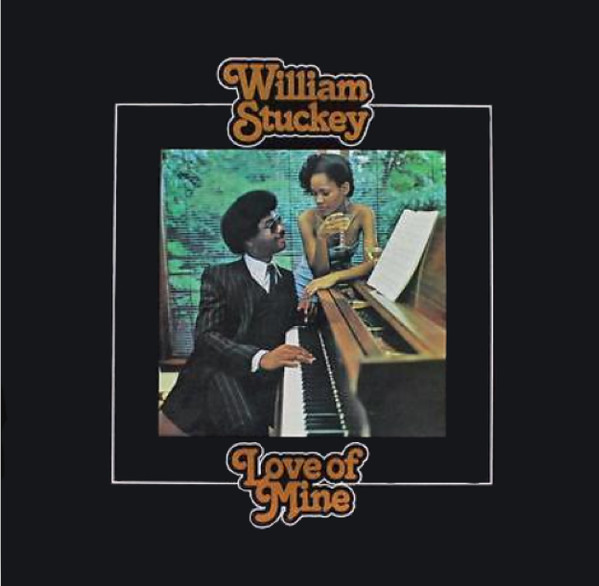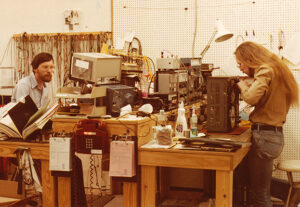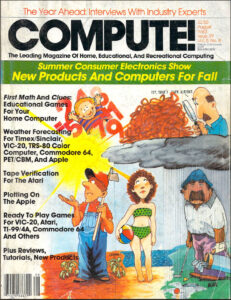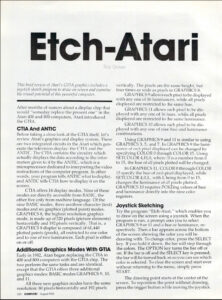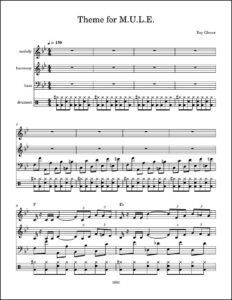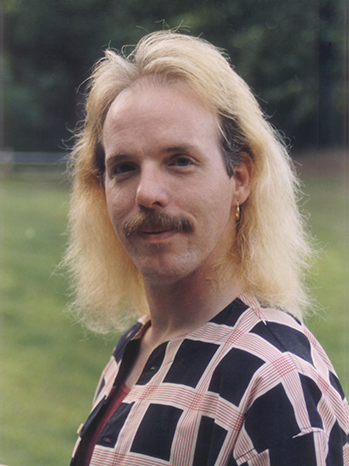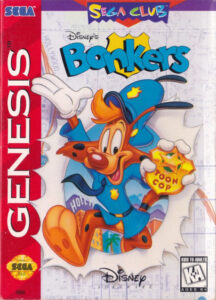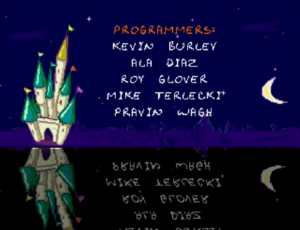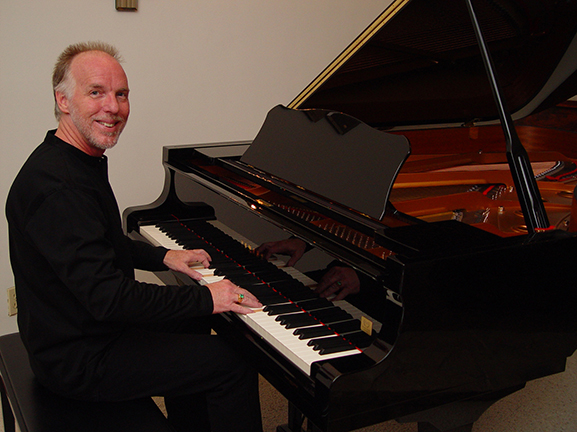Compiled & edited by Andrew Dieffenbach, M.U.L.E. Online developer and World of M.U.L.E. contributor.

Not content with the inability to interview Roy Glover for last year’s 40th anniversary article, we made another attempt to find his whereabouts and include him. Fortunately, we found him. This article is the result of an interview and is meant to shed light on Roy’s music and programming career, as very little is publicly known about the composer of the song that many of us have enjoyed for many years, the theme music from the classic video game M.U.L.E. It has been edited for time and clarity and reads more like a biography.
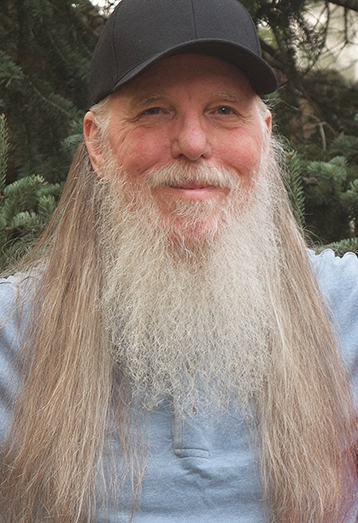
Roy: I appreciate the effort that you have made to track me down. I have had people that I knew from long ago track me down in recent years. As a matter of fact, the most recent was the leader and singer of the first professional band, The Casanovas, I was in 50+ years ago in 1970.
Music & Computer Interests
My earliest hobby as a very young kid was electronics. I had my first soldering gun at about 8 or 9 years old. I got my first multimeter at 9 or 10 years old. But I always enjoyed music, as far back as I can remember.
By my early teens in the 60s, there were a lot of interesting changes in popular music and my interest in music grew. I was basically chomping at the bit to become a musician.
My mother had had some lessons and played the piano when she was young. She enjoyed playing church hymnals and was pretty good. One day she bought an old piano from a neighbor and that was the start. I taught myself to play piano when I was about 12 years old. We didn’t have a record player until I was about 13 years old. But within a few years, I really wanted to be in a band.
The popular music that was on the radio at the time were the Animals and eventually the Doors. There were several popular bands at the time that had organ and that’s what I was focused on. Alan Price, the original organist in The Animals was a killer player. He left The Animals and put out a record with a version of the song “I Put a Spell on You” when I was around maybe 16 years old. It was such a killer version and it had an insane solo in the middle of it. That really inspired me. It was beyond my capabilities at that time but I always had it in my mind to pick that solo out note for note and be able to play it. About 10 years ago I actually did that! (laughing)
First Keyboard & Performances
When I was 15 years old, I worked a full time job all summer as a greenskeeper at a local golf course. I made a lot of money–we’re talking about a dollar and a quarter an hour, (laughing) which was a lot of money compared to other kids my age, who were working at fast food joints or whatever for 75 cents an hour.
I managed to save enough money to buy my first musical instrument, which was a Vox organ, the Super Continental. I wanted an organ with 2 keyboards, which the Super Continental had.
I started playing in a couple of bands around the end of the summer in 1968. I played my first paying job around October 1968, at a girl’s birthday party, and got paid a whopping $5. That was my first professional engagement! (laughing)
I felt really fortunate because while most of the kids my age were having to work part time jobs after school to make peanuts, here I was, playing music and actually getting paid for it. It was great!
Professional Gigs
A couple of years later, I graduated high school in June of 1970. At that time I was not involved with any particular band. I had pressure from my parents to get a job, so I went down to the local employment office to get some help finding a job. The advisor I was set up with was a guy, about 25 years old, who was a singer in a band. We got to talking and he said instead of me trying to find some regular job that I should audition for his band, The Casanovas. So I did and that’s when my real professional career took off.
I started playing in night clubs at 17. Keep in mind that we were pretty much in the Deep South; it’s 1970 and there’s still lots of racial problems. This band I was in was all black guys. I was the only white guy there and for about the first 6 months, all that we played in were black clubs. And here’s a skinny little white kid, the only one in the whole place! I was quite a curiosity to a lot of people.
One of the common things at that time, especially in the clubs like that, is there would be a photographer walking around with a Polaroid camera, asking people to have their picture taken and to buy the picture. One night there was a woman taking pictures and apparently I was interesting enough to where she took a couple of pictures of me on stage and just gave them to me.
The other guys in this band were all a few to several years older than me. They introduced me to jazz. The singer who I had initially hooked up with and I became real good friends and hung around together, in spite of him being probably 7 or 8 years older than me. He wanted me to get a Hammond organ; so that’s why I got my first Hammond organ. The Hammond dealer asked me if I had ever listened to Jimmy Smith, one of the most famous Hammond organ players of all time. I had not; so he actually gave me an album, and that’s some of the first jazz that I learned on the organ.
I was with that group for about a year. It had been great, but in order for me to grow, I needed to move on. I needed to get into different things so that I could learn more. I ended up in a group that included my younger brother John, who was the drummer. We had a group for about a year. It was almost a 180 from what I had been doing–the music we did was Allman Brothers Band, who were getting really big at the time, and Santana–more rock type stuff. That was a good experience and a great band. The people in it ranged in age from about 17 to 20. And you would not believe how polished it sounded, for a bunch of kids.
We had been practicing and had built up enough of a repertoire where we were ready to get out and play and find some jobs. But we had not named the band. One day, some of us were riding around and had been arguing and debating about a name. We looked up and there’s a billboard for a local Mexican restaurant called Sullivan’s Tamales. And so we thought: “Well, how about that? Let’s call ourselves that!” By that time everyone was tired of arguing and gave in and said “Okay, fine.”
As that band had run its course, I decided to get married at 19 years old. But over the next several years, I played in lots of different bands. Most of them were working bands that would play popular music, what people were hearing on the radio–dance music, because that’s what it took to get work in nightclubs. The main purpose for hiring a band was to have something for people to dance to.
Around 1978, I was burned out. I remember people telling me I’ve got the greatest job in the world, playing music and getting paid for it. I’d tell them you’re absolutely right, but I wouldn’t tell them that there’s a lot of other stuff that you have to deal with.
Glover Brothers Band
From the early to the mid 70s, Jazz Fusion came along and I really liked it. It was sophisticated and more challenging. I spent some time trying to learn it, listening to artists like Jaco Pastorius and Weather Report. There was Chick Corea, Herbie Hancock, and Joe Zawinul—those were my main heroes, I kind of idolized them in a way.
I got with my brother, a huge jazz fan, and set out to scrounge up a few musicians and work up some music that we enjoy at a rehearsal space in my home. It just took off. We had no expectation of ever working in the band, but we did. We introduced music to Arkansas that was blowing people away. In larger cities, there had been lots of jazz and people were more familiar with it there, but in Arkansas it was brand new.
That’s when I switched over from organ to piano. I already had a Fender Rhodes piano for a while. I had a Minimoog, a Micromoog, a Clavinet, and a string ensemble kit made by PaiA. My setup most of the time was the Rhodes, Clavinet, and Minimoog.
Ed Nicholson was the only guitar player that we had in the whole span of the band, simply because the majority of the music that we were playing didn’t call for it. The instrumentation changed slightly from time to time. At one point we actually had a flugelhorn player for a short while. We were trying different combinations.
At one period around 1982 we had what my brother and I have always agreed was our best combination of people–myself, my brother John on drums, Jeff Taylor on congas and percussion, a young bass player, Steve Black, who was very good, and a saxophone player, Kenny Reed. That was the best combination–how we wanted it to sound.
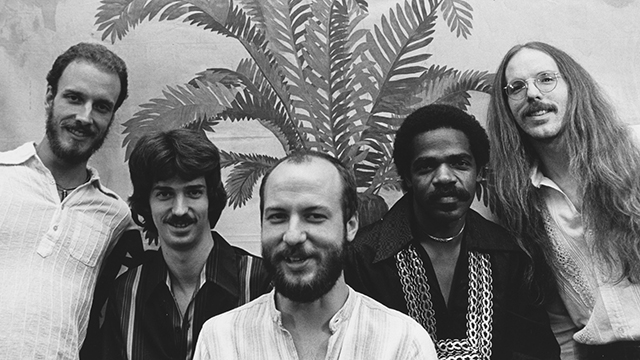
Jeff Taylor, Steve Black, John Glover, Kenny Reed, Roy Glover
I have quite a few recordings of that combination. I also wrote a little bit of music for it. There was a song called Breeze which I had written in 1977. I actually had a TEAC open reel stereo tape deck and a cassette tape recorder. I would record a track, maybe a synthesizer, and then play that back and record that into the other machine while I played along with it, bouncing back and forth until I got all the parts. It was a really crude way of overdubbing; you ended up with like a 7 or 8 generation recording, which are not very good quality.
I put some music up on YouTube in 2010. For some of it, there isn’t any video; so I stuck a static photograph of the band on there. I think I have about 35 hours worth of recordings from my bands over the years. I would love to have them all up on YouTube, but most of the recordings are bad quality. It’s very time consuming to go through and fix them up as best as possible.
Unfortunately, one of my biggest regrets is that we were never able to do some studio recording. The expense of recording sessions was beyond our means. There was none of the technology that we have today; you had to go to a professional studio. Even in the 70s, in small studios in Arkansas, studio rental rates were something like $75 an hour.
William Stuckey Album
William Stuckey was one of my oldest and best friends. My brother John, William, and I started working together in 1975 in a band. William was already in a band, led by a guitar player named Albert Smith, doing mostly soul music. I remember that they needed a drummer; so my brother was contacted. They found out that I was his brother and they decided to have two keyboard players. William Stuckey was a very good keyboard player and a sensational singer. He never really wanted to be a singer, which is mind blowing. His real interest was composing. Incidentally, William was blind from birth.
We decided to break away from that band and start another called Living Color. It was a four piece band: two keyboard players, bass, drums, but no guitar. We were playing popular music and it was really interesting because we didn’t have a guitar player. I also have some recordings of that band.
Around ‘78, William had written some material and wanted to get into the studio. My brother and I joined him. I was there mostly to support my friend simply because there wasn’t a need for a second keyboard player. William wrote the music and knew how to play it. Why take the time teaching it to me!? But I fully understood. I did add a few parts here and there. I remember I played a synthesizer part on the song The First Time that is sort of harpsichord sounding.
There were some string arrangements that needed to be played. They had lined up someone to do it but this person flaked out. I asked William to let me talk to my brother Bobby, because I think he might be able to help. He ended up writing all of the string arrangements, I believe some of the horn arrangements, and doing some of the conducting in the studio.
William’s album, Love of Mine, was recorded in a studio in Little Rock, mixed and mastered at a more professional studio in Memphis, and was first released in 1979. It was a good achievement. A few years ago [from today], a company in Scotland decided to remix and re-release it. You can get it on Amazon or wherever. Fortunately, William lived long enough to see that happen.
William died just a little over two years ago now. We would fall out of touch for years at a time and then we would reconnect. And it’d be just like we had talked the day before. That’s what good friends we were. A few years ago, he tracked me down and called me. I was able to and felt so fortunate to be able to spend a year visiting with him pretty regularly before he died.
In January of 1976, William, John, Kenny Gilmore (the first bass player in Living Color), and myself went into the studio to record a demo of a song William had written titled “Everything Good in Life”. It was magic. The song and recording were beautiful. Through a series of unfortunate events the master tape was lost. Many times over the years during the course of conversation with William or John we would bemoan the loss of the recording.
Late one night, just two months before William died, the song came to mind and I decided to dig through some of my old cassettes. It was a common practice to do a rough mix onto cassette after a studio session. I had looked a number of times in the past with no luck. But this time, as I pulled a cassette from the case and looked at the back side, there it was labeled “Everything Good in Life 1-13-76”. I was astonished! I quickly dug out my old cassette deck which had not been used in about 15 years, with no great expectation that it still worked or that a 45 year old tape would even be listenable. I was amazed at how clean the recording was so I transferred it to the computer, emailed an MP3 file to William and John, and called William at 3 am. William was totally blown away. He asked me to contact the rep for the company in Scotland which had re-released the “Love of Mine” album earlier that year. I provided the recording to the company and the song was released as a single in early 2023. Even though William didn’t last long enough for the release, he did get to hear one of his most cherished songs.
I did occasional studio work for other people, but there was not a very large recording industry in Little Rock. In the 70s and 80s, there were a lot of very talented musicians there and I always thought it was such a shame that there wasn’t more of an industry for them.
There was a sax player named Pharoah Sanders, who was originally from Arkansas. He was a giant in the jazz field. The Glover Brothers Band were playing at a jazz lounge in Little Rock one night, and in walks Pharoah Sanders, so we actually got to play with Pharoah Sanders!
Stereo and Computer Services
My only formal education was in electronics. For a while, it was electronics and music that I bounced back and forth between; many times doing both at the same time. In 1977, I started working in the service department of a high end audio store in Little Rock called Custom Audio. Alan Watson had been working at the company for several years. When I first started, Alan was at another branch, I want to say in Colorado or something, but after a short period, Alan came back to Little Rock and that’s how I got to know him. We worked together.
The guy that started this store was named Charles Jacob. He was the sole proprietor for several years, but then at some point before I came aboard, had taken on a couple of partners. I worked there for several years.
It came to a point when Charles and his two partners were not seeing eye to eye on the direction of the store. Charles was wanting to move into some new things. The other guys didn’t, so Charles ended up breaking off with them and started a new store called Leisure Electronics. He asked both Alan and myself to come along with him, and we did. That would have been around 1981. One of the things that interested Alan and me was that Charles wanted to get into selling home computers, which were fairly new at the time. Alan and I wanted to get into computers and hopefully learn some programming. So the store became an Atari dealer.
Alan was working as a salesman at this store and I was working in the service department. Well, I mean, I was the service department! (laughing) The whole store consisted of 4 people! I was doing authorized Atari service work. (laughing) I was working on [Atari] 400s, 800s, and truckloads of 2600s.
I had been interested in computers several years before. I believe it was in 1975 when the Altair 8080 came on the market. It just happened that someone in Little Rock became a dealer working out of their house and had a display set up; so I went to look. For what it was, I could not justify the expense. I had a young family to support and I don’t remember the exact dollar amount, but it was a lot for that time.
So working at the electronics store, it was more affordable because I was able to get a dealer discount. I first bought the [Atari] 400, but I could not deal with that membrane keyboard.
I started out the usual way–learning BASIC, but it didn’t take long for that to start driving me crazy because it was so slow, being an interpreted language rather than compiled language. Then, Alan and I both dove into learning 6502 assembly language, starting with the Atari assembler cartridge, which was pretty pathetic, very hard to deal with–very slow. Fortunately, in the early 80s, there was a guy who had taken the SC Assembler, which was a popular assembler for the Apple II, and ported it to the Atari. It made learning much easier.
Alan and I had become pretty good friends and we worked together for at least 5 years at that point. Alan was always a little on the quiet side. He was very low key, very nice, very polite. I really liked him. He’s very intelligent. And it was good to have another person around to bounce things off of.
I loved programming. It was very challenging. I’ve always loved learning. There are very few things that I could say that I’m absolutely not interested in. Very few things in this world. You bring up a subject, start talking about it, and I’ll dive in and try to join you the best I can because I have always been interested in learning new things and have been fortunate enough to work with some very sharp people over the years who I have learned a lot from.
Alan wrote a couple of articles for Compute! magazine. I dug around online recently and found those old issues and have them in PDF format. I might still have an actual copy of the Computer! magazine that the article I wrote, called Etch Atari, is in.
The M.U.L.E. Theme
As I mentioned, I was still playing music at the time. Music was pretty much ongoing nonstop for many, many years–very few breaks. That’s kind of a given, no matter what else I was doing, whether it was electronics and then computer programming, I still had music going.
Being so deep into it, I tended to think of most things in terms of music. The possibilities of computers and music interested me. I’ve always been a technical-minded person. I’ve always had a very strong logical and technical side and a creative side and they have worked pretty well together.
I had gotten pretty good at programming. One of the things I really wanted to do was see if I could get the [Atari] 800 to make some music. All of the games that were coming out at that time would have music with just 1 voice. And my thinking was this thing has 4 voices and no one is making good use of them. I wanted to see if I could make an ensemble type sound; so I wrote a program to sequence music. I wrote the M.U.L.E. theme to test my sequencer. I wrote it before M.U.L.E.! (laughing)
I don’t recall any specific inspirations for the theme. I just needed some notes to use for my sequencer. It just happened. That’s the magic of the creative process. Sometimes you can’t explain exactly where it comes from when it happens. It’s entirely possible that there was some subconscious influence. I was definitely wanting a disco type bass sound because it was very energetic. Whatever influences there might have been, there was very little conscious thought that went into it. I wasn’t saying how can I make this sound like this genre or that other than the bass part.
Somewhat recently, I scored a number of original songs that I have written over the years. One of them being M.U.L.E. I have written out parts with very close articulations to the original. But had I performed M.U.L.E. live, it would have been drastically different.
The bassline is the heart of the song. That is the prominent part. It’s very disco sounding, playing the alternating octaves, straight out of 1978 disco. As far as the melody goes, the idea was something more like a horn. Then you have the middle section–it is more legato sounding, much more smooth, not as sharp and cut off. I was probably imagining more of like a legato string type sound, so you would have horns playing the melody or the verse, and then have the strings playing the middle section or the bridge and then come back out of that; back to the horns.
As a musician, I tend to think of music in terms of standard form. You have an A section, B section, and a C section. A sections are usually the verse, B section is usually the chorus, and C section is usually the bridge. That middle section of M.U.L.E. would be the bridge section of the song. The initial part, the verse, is a major key. Then the middle part goes into a minor key, which is a fairly common way of doing things in music.
Later on, adapting the M.U.L.E. theme to the Commodore 64 was quite a point of frustration for me because it had less voices. It wasn’t as critical during the melody section, but that middle section, without the harmony voice playing the counterpoint melody, took its soul away.
Ozark Softscape
I can’t remember when Alan met Dan Bunten. I remember Dan and his brother Bill would come into the store. And I would do a little bit of hardware work for them, like making serial transfer cables.
Sometime around then, Alan hooked up with them and they started Ozark Softscape. This would have been maybe mid to late 1982. Alan ended up leaving the electronics store and working full time for Ozark Softscape.
Meanwhile, I’m still working there. But I kept in touch with these guys and with Alan. I went over to the house that they were working out of a few times and they were getting me to do some utilitarian type functions for them on the computer. One thing I remember was they could not figure out how to make a boot disk, for instance. I helped them out with little things like that.
At some point I must have demonstrated to them my music sequencer using the 4 voices and I guess it blew them away. They were like “hey, can we use that?” because they were working on M.U.L.E. I said “Oh, sure. Of course.”
When I supplied the music to M.U.L.E., I was not an official member of Ozark Softscape. They ended up inviting me to join the company, but by that time M.U.L.E. had been finalized and the publishers, Electronic Arts, said it was too late to change the credits. It’s not a big deal because what was really important to me was the experience. It has always been the most important thing for me. If other people recognize it, I am satisfied with being satisfied.
Seven Cities of Gold
I don’t recall contributing anything other than the theme for M.U.L.E. I immediately started working on Seven Cities of Gold. I had composed a little piece of music that I really liked for the theme that had a very Spanish Flamenco style. Electronic Arts rejected it; they sent me some sheet music. It was a piece called La Bomba, which was from like the late 1600s or early 1700s. It was a 4 part choral piece. I thought there’s no way to come close to simulating a choir, so I ended up giving it more of a classical guitar sound.
That bummed me out because I really liked the little piece that I had written, but it was not as historically accurate, which I appreciate. A lot of effort went into Seven Cities of Gold from the historical aspects and timelines and so forth.
I came up with the idea for the animated hand to write the title using a quill pen, so I created the entire title screen graphics, animation, and theme music. I also did all the sound effects on Seven Cities of Gold. For example, when you discover a treasure or something, there’s a little fanfare.
Another one of my programming contributions to Seven Cities of Gold was there was tons of map data that had to be loaded in as you were traveling. When the Atari computer went for disk access, everything would just stop dead–that killed the idea of being able to smoothly scroll the screen as you were traveling, so I rewrote the IO and implemented multitasking with an interrupt with a small amount of disk access so everything didn’t freeze up. That enabled you to scroll indefinitely as you were traveling.
This seemed like a fairly huge endeavor at the time to go through 2 KB of code and figure out how to rewrite some of it–but got it done! Everything was working great and then every once in a while it would crash and it pointed to what I had done to enable continuous disk access. It turned out it was one simple instruction–I had done an arithmetic shift where it should have been a logical shift, so it worked most of the time.
You can thank Jim Rushing for the land generation. I felt like Jim might have had the biggest brain of the group. Some of the mathematical work that he did was mind boggling.
The only thing that wasn’t quite as good as I wish it had been: Dan, Alan, and Jim all had the three bedrooms in a small house that we all worked out of; I was set up in the dining room, in a traffic area, which was not that conducive at times for concentration. But what are you gonna do!? You run out of rooms; you’re going to have to work in the dining room. I didn’t complain about it. But there were times that I would be trying to focus on something and someone would come through the dining room to get to the kitchen and it would distract me.
Other than Alan Watson, I never really got to know the other guys at Ozark Softscape that well. Dan was definitely a bit eccentric. I remember some enjoyable times. We would very regularly take a break and walk around the nearby lake and chit chat, which was very nice. I remember, at least a few times, we would all be banging our heads, working hard, and finally someone would say “hey, let’s take a break and go to Baskin Robbins”; so we’d pile in the car and go down and get some ice cream. There were some nice memories, as short as it was.
Working on M.U.L.E. and Seven Cities of Gold was one of the most fun periods in my life. I was there through the development of Seven Cities of Gold. I left not too long before it was finalized. It wasn’t on the greatest terms. My marriage had ended and I was in a mess when I was working there. I was still contributing but I think the guys were disappointed in me. I kind of flaked out on them. I have always tried to maintain a strong set of values and have tried really hard not to be a flake, (laughing) but there have been a few times where I have. I guess it’s part of being human. I was in the state of mind where I needed to do something else. Programming is a secluded and lonely job. I was trying to figure out how to put my life back together.
Going to California
I got back into playing pop music at clubs and traveling around for a while. It’s a tough way to make a living as a small time musician. That came to an end around 1987. I had enough experience by then to recognize when things were winding down. I never saw any merit in going down with the ship. I’d work with one band for 6 months and then change to another one.
I married again in 1987. My new wife was more adventurous. We decided to move to California. I have been away from Arkansas ever since. For the first 5 years there, I worked almost exclusively on music equipment for a lot of well known musicians at a fairly large service center named Musictek Services, which was exciting. I met some big time musicians that I thought highly of, such as Herbie Hancock. He came in one day and one of my co-workers stuck his head in my door and told me. I was like “you gotta be kidding!” I learned a lot from listening to and trying to play Herbie Hancock’s music. So I had to go out and introduce myself.
Atari ST and Sega Genesis
Ironically, the owner of the place that I worked decided to get into servicing Atari computers. By then it was the Atari ST. I created some MIDI editor/librarian programs in 68000 assembly for the Oberheim OB-8 synth, Yamaha SPX9, Alesis HR-16 drum machine, and Alesis D4 drum machine. I managed to sell a handful to different places around the world. But I did not have the capital for advertising to make that go much further.
Then I decided to jump back into video game programming (laughing). I found an ad from Sega in the newspaper seeking a video game programmer. I called and set up an interview. It turned out it was like a 55 mile drive from where I lived. I thought there is just no way I’m going to make that drive every day, but I’ll go ahead to the interview. They knew who I was and were really eager for me to work there, despite the 110 mile round trip. “Give it a try. If you don’t want to stick with it, we’ll understand.” I ended up doing it for 2 years! I felt like the only reason they hired me was because I had some association with M.U.L.E.
This branch had about 50 employees, crammed into a relatively small office space, and was continuing to grow. I contributed programming on the Genesis for the game Bonkers, mostly [working on] physics routines to control the movement of objects.
I gave it my best try, but I was not enjoying it. It wasn’t my favorite job. They weren’t giving me enough to do. I would go to managers and beg for something to do. It’s like they were fine with me sitting around doing whatever I wanted to do. And I’m just not like that–I have to accomplish something. Maybe some people would have been glad to sit around and just collect their paycheck.
They were not running things well; not very well organized. Several months before I left, the manager I was under handed me some sheets of paper and a book and asked “see what you can do with this.” I started reading it, which was about 3D matrix transforms and stuff like that. I asked them what it was for, in order to get a sense of direction, but I couldn’t get much out of them. They wanted me to just blindly develop a 3D engine on the Sega CD. I got a pretty good start on it, but again, it was not the greatest place and so I left. And within 6 months, that place closed. I had seen it coming.
The video game industry grew so huge. Projects would have multi-million dollar budgets. I suppose there was a lot of inefficiency that came with that. But at the same time, you’re under the gun with deadlines set by the higher ups in a big business. It takes the fun out of it. People who initially enjoyed the learning and creative aspect of it, didn’t enjoy it as much anymore. When you start having to do something as a job, on a schedule, and others are depending on you, it changes things a whole lot.
Atari Jaguar and Sony PlayStation
After I left Sega and was looking for the next job, I quickly learned the C programming language. I still have the first command-line C program that I wrote. It calculates the value of a capacitor and an inductor for a speaker crossover. Music, electronics, computer programming–they all go hand in hand with me.
I soon worked for a small independent development firm in Marina del Rey called Accent Media Productions, first programming the Atari Jaguar. It was a pretty neat little machine, but it didn’t take off well enough. Atari was on its last legs by then. But I also programmed for the PlayStation, which was brand new; we became an official PlayStation developer. The development system for the PlayStation, which you had to get directly from Sony, was like $40-50,000. I enjoyed both the Jaguar and the PlayStation because they used RISC processors and I got to experience the challenges of programming assembly with a reduced instruction set.
From ‘94 to ‘96 we had a couple of games in the works, but they didn’t get finished. The one that got the furthest was called Varuna’s Forces. It was a 3D space shooter. I developed a 3D engine which was used on the Sony PlayStation, Sega Saturn, and PC, all in development simultaneously.
Unfortunately, this small company was not being run very well either. We had investors that were pitching in millions of dollars but the finances were not handled well; so it started going down the tubes. And once again, I decided to leave and not go down with a sinking ship.
Around that time Sony had come out with a retail PlayStation development system (Net Yaroze). I think the system cost something like $800 which is way lower than $50,000. When I left that company, I had some video game ideas. I bought one of these systems, got with one of the artists I’d been working with, and worked for several months developing a game. But it never got finished.
My idea was for a remote controlled airplane simulator, where your controller was like an RC controller. It was called RC Flyer. And I planned that next would be an RC car, an RC boat, a string of different remote control simulations. I got pretty far into development, but the guy that was working with me mysteriously disappeared without a word. That was in 1997. I saw that as a sign, maybe it wasn’t going to work out.
Multimedia Company
My wife was working at a high end photo lab, mostly touching up and compositing photos for movie studios. Someone there came up with the idea to use a program called Director by Macromedia, which could play graphics and sound using basic instructions and macros. But it also had the capability of running scripts which were more like programming in C.
Traditionally, movie campaigns included posters, billboards, newspaper ads, and images on the sides of buses to advertise. Those were developed in this country, but larger studios, like our biggest client, Sony, distributed movie posters to like 65 different places around the world. It was a major endeavor and cost for Sony to work with a bunch of independent vendors to translate the movie posters to different languages.
So I developed a way to easily browse all the advertising assets on a single CD, and our company, Paradox 2000, was born. We’d receive all the assets developed by their third party vendors. I would make sure they were in the proper format and sizes and also clean them up. So rather than loading huge graphics files in Photoshop, which was very time consuming, it had a browser which would preview movie posters and with the click of a button it would download to their computer. It made it easier to modify the text and translate it.
We ended up working on advertising for about 700 movies and TV shows. It was very successful.
Present Day
I’m now retired, living a quiet life in southern Missouri occasionally visiting with my grandkids and great grandkids, and still working on music, electronics, and spending time on the computer.
Legacy of the M.U.L.E. Theme
Up until around 1994, I had no idea that there was still interest in M.U.L.E. The things that people have done, I’m all for creativity in all forms and fashions. I’ve collected a good 10 or 12 files of remixes of the M.U.L.E. theme that people have done and some of them are really impressive and pretty interesting–all the way from hip hop to classical.
Around 2007 I happened across a version of M.U.L.E. that someone had done and it blew me away. It sounded so professionally done. I wrote and told him what he did was great. He recognized me and wrote back, thrilled to hear from me.
There’s an a capella group in Sweden that does video game music. It’s 2 males and 4 females. They asked me for permission to use M.U.L.E. on an album they were to record. So I’m like “sure, that’s great; one condition is that I get a copy.” I actually have that album.
There are people all over the place doing all kinds of interesting things with retro video game music. My son was into that for a while. I appreciate all the music that people make with the M.U.L.E. theme. My experience playing music by other people is sometimes it’s impossible to make it work right; other times I would be able to maintain just enough of the essence of the music for it to be recognizable but also have my own touch to it. There are just all these possibilities.
Conclusion
WoM: I appreciate you taking the time to talk about your love for music and computers and your work on M.U.L.E.! On behalf of myself and the M.U.L.E. community, thank you very much for supplying part of the soundtrack of our childhoods! Your music continues to be enjoyed by classic gamers as well as a new generation of players of the game Roblox. If you had just one wish for the future of the M.U.L.E. legacy, what would it be? And is there anything else you’d like to mention?
Roy: I’m still trying to get my head around the fact that there is a legacy… that good enthusiasts such as you continue to propagate it for generations to come.
It makes me feel good just to be remembered. I have never had an overinflated ego or thought that I was the greatest at anything. But I am proud of some of the accomplishments that I have made. And I try to recognize those important lessons that life sends us occasionally.
Finally, I would be remiss not to acknowledge that some of my greatest inspirations in life for almost 50 years have been from my children, Elton and Bonnie. Elton works for Google in Silicon Valley and Bonnie works for the public school system in Springfield, MO. I am very proud of them both.


